War Machine: surface robot
** Surface robots are the future of marine conflict. The auto budget system provides a military presence almost anywhere in the world, and is armed with "bees", if necessary, strikes on enemy ships and submarines, and can not afford their own taxpayers. **
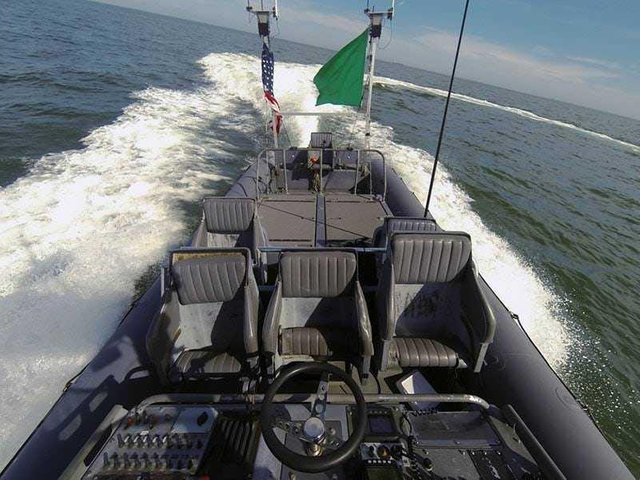
** Rubber boat in unmanned mode, photo of US Navy / John F. Williams, source. **
** In 2016, the United States presented a group of inflatable auto boats capable of patrolling the harbors and harbors friendly - a single operator can ride a bunch of oceans. The system can independently surround suspicious vessels, provide the ability to monitor long distances or accompany friendly vessels - most likely, in the future, such drones will cover large habitable ships. **
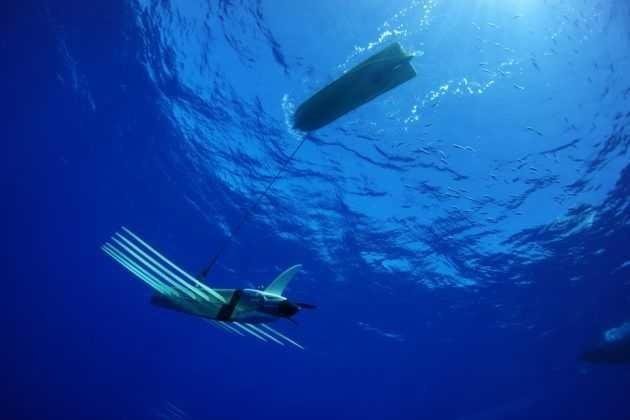
** In the same year 2016, Liquid Robotics and Boeing introduced a group of SHARC surface active submarine robots (based on Wave Glider robot) designed to detect and track enemy submarines. Equipped with acoustic sensors, the device successfully locates modern underwater vehicles and inhabited diesel submarines and sends over a hundred automated reports to "headquarters". **
** The Glider Wave Washer differs from the original design - this is typical for autonomous unmanned (AUV) "cigar" vehicles, equipped with six pairs of moving underwater "wings" and a surface area designed to recharge the system using photovoltaic panels and communications with other systems . **
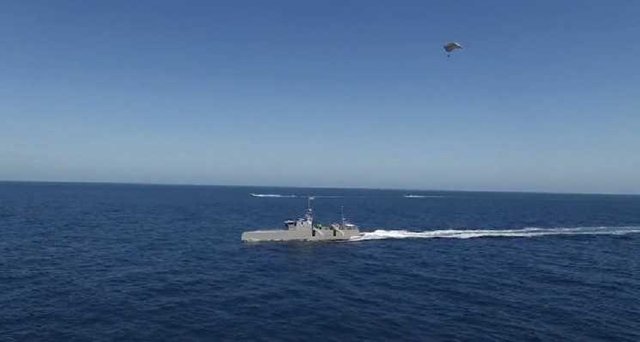
** At about the same time, the US tested the concept of TALONS - or a lifted air lift module for the ship system. Modern radar is mounted at the highest point of the high-warship - the higher an add-in house, the larger the same range of distances will detect the enemy. Most radars placed on old military ships are set at a height of 45-60 meters - not bad for a Second World War battle, but certainly not enough for sophisticated missiles, and then Railgun firing. **
** TALON - the idea is simple and elegant. Why put a radar onto a ship, if it can be launched into the sky and coupled with a parachute? The "distance" of the 450-meter raised complex is increased 5-6 times. **
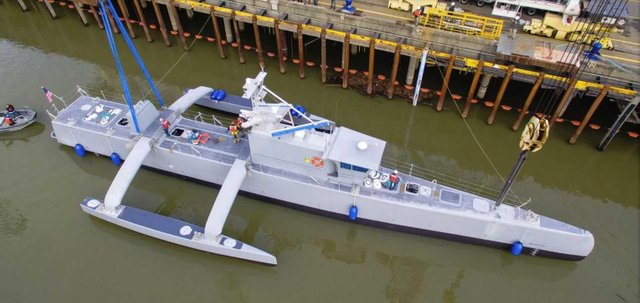
SeaHunter surface robot (ACTUV)
** TALONS was tested on an ACTUV surface robot, also known as Sea Hunter. The system does not carry weapons on board, but accelerates to 27 knots, and can go out to sea for 2-3 months. The daily operation of a single platform costs $ 15-20 thousand - about 40 times smaller than a regular destroyer. **
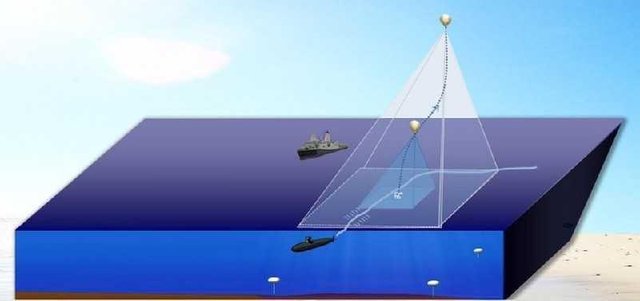
** The US considers and the global project - in particular, DARPA is offered a place in a sea of "sleeping" capsules with military drones, capable at the right time to "wake up" and make explorations in the area, or to attack the enemy. The project is called UFP or Payload Fall. **
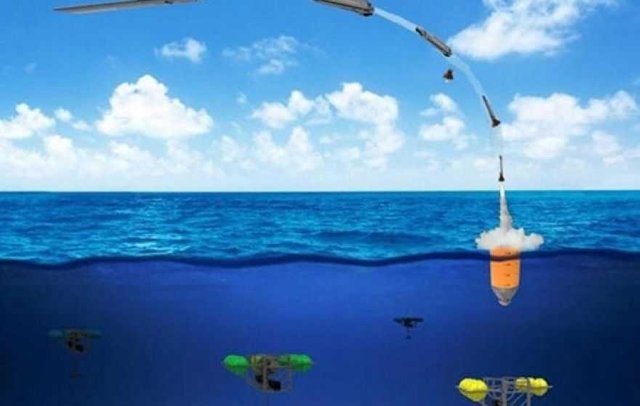
** In theory, this system will allow the US military presence in the shortest possible practical time anywhere in the world and will reduce the amount of financial investment required: instead of an expensive mobile platform, one can use a disposable budget or ammunition. **
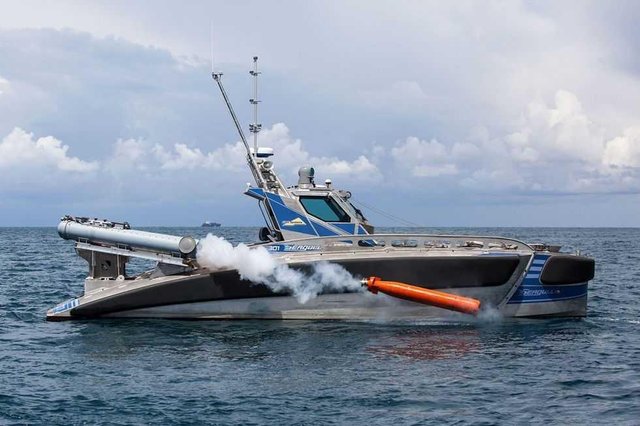
Boat Seagull, Elbit System, Israel
** Israeli developers have completed surface drones from Seagull's torpedo installations. The vehicle accelerates to 56 km / h, 12.7 mm machine gun and a group of disposable robots to remove mines in minefields. Hiking time for one boat can be about 4 days, distance from operator more than 95 km. **
** From one command post it is possible to control a pair of boats at a time. According to the developers, such a tandem could replace frigates with 40 sailors, which cost about $ 220 million. Controversial statements. **
** Armed Seagull promises a new era of naval warfare - the cost of detecting enemy submarines dropping at times, but the life of the submarine crew, on the contrary, is tricky - figuring out the water of a small boat is very difficult, and therefore high risk that in the case of sudden torpedo attacks people on their submarines do not even have time to react, to relate or to maneuver anything. **
** Such "bees", ready at any time to "sting" the most important and valuable equipment of the enemy, will not bump into even the poorest countries, and thereby significantly alter the alignment of troops at sea. **
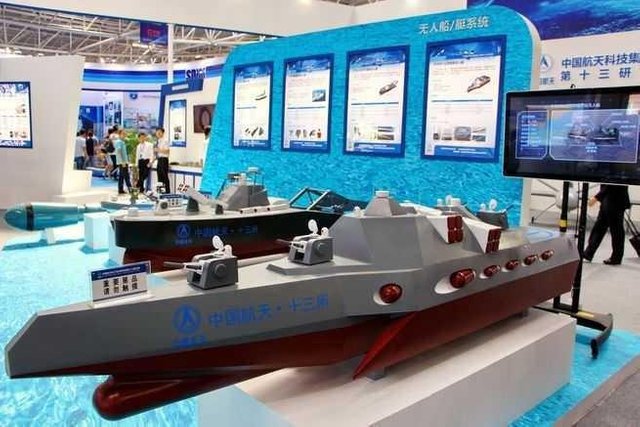
D3000, China.
** In 2017, China introduced the concept of a large ocean D3000. As expected, the novelty will be able to continue the autonomous campaign for several months and act independently and coordinate efforts with the ship "inhabited". The device will have automatic weapons, missile missiles, and systems to launch smaller marine robots, torpedoes, and marine mines. It can also be assumed that smaller robots will have automatic machine guns capable of attacking approaching enemy missiles, providing a heavenly "steel shield" for large allied ships. **
** The modular design will reduce the cost of repairs and will allow the ship to be adapted for almost any mission. However, the concept presented in 2017 is not distinguished by technological perfection - four machine guns of the Type 730 will make the ship too heavy, and anti-ship missile installations will not fit completely on such ships. **
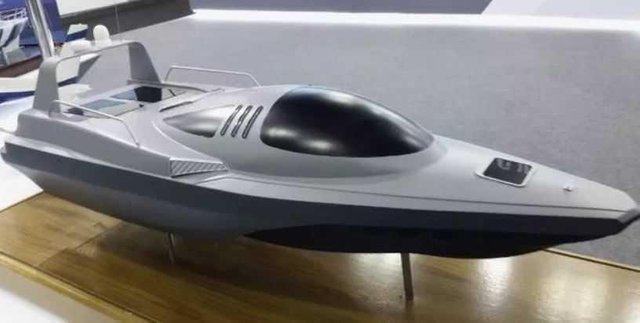
high-speed cutter HSIB, China
** The high speed Chinese HSIB boat has passed the test - the vehicle accelerates to 148 km / h and is capable of carrying light machine guns (7.62 mm) and medium (12.7 mm) or anti-tank missiles. **
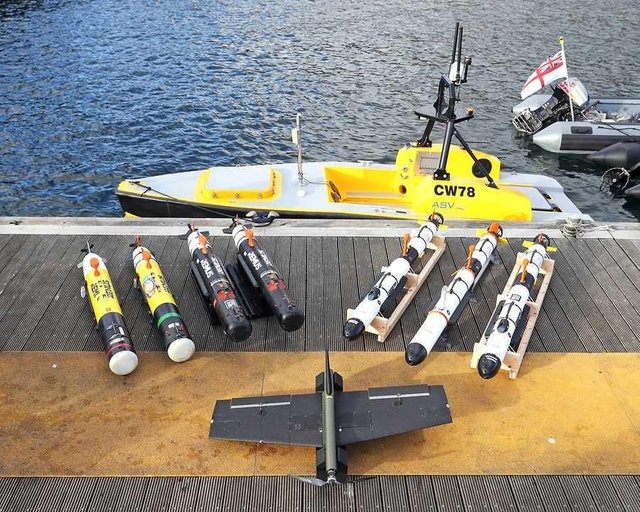
** In the near future, the US intends to increase the number of autonomous marine robots to 355. The future of military surface robots is still the same integrated and decentralized heterogeneous budget system **
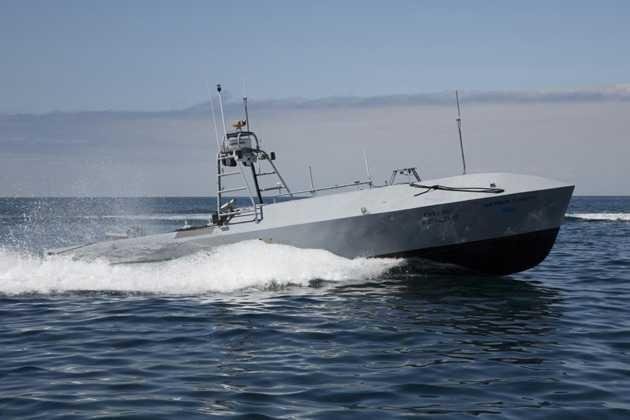
Boat CUSV, Textron Textless System System
** The mass distribution of autonomous and semi-autonomous platforms is expected in the coming years - in particular, the American company Textron is currently considering the possibility to arm the CUSV marine robot platform. **
This concludes our story of surface military robots - next time we will talk about peaceful water systems. In preparing the material, we use data from robotrends.ru, as well as from the source shown below.

The author signed up for you. Leave me a comment on the article. I would be grateful
https://steemit.com/ico/@davydov1/the-improved-transaction-system-is-already-nearby-blockchain-quarkchain